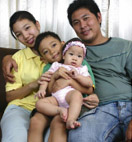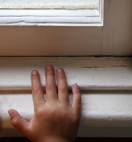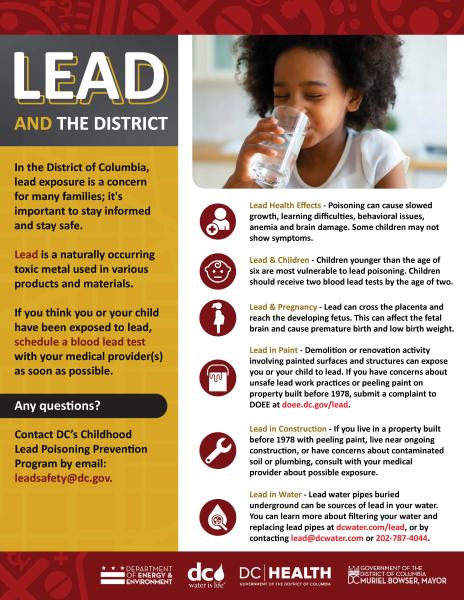What is lead?
Lead is a naturally occurring metal that can be found in all parts of our environment. Lead-contaminated dust and particles can exist in the air, the soil, the water, or the ground surfaces where people walk and play. When lead is ingested, it is toxic and harmful to humans, even in small amounts.
- Children who are 6 years old and younger are at the greatest risk when exposed to lead, because their growing bodies absorb more lead than adults.
- Pregnant women and nursing mothers should avoid exposure to lead to protect their children.
- Recalls & Product Safety Warnings: See recent lead recalls and product safety warnings.
For additional critical recall announcements and lead poisoning prevention information, visit: Childhood Lead Poisoning Product Recalls | doh
- Imported Cookware Recall
- Sprout Organics Recall
- Kitchen and Bathroom Faucet Recalls
- Voluntary Baby Food Recall: Possible Lead Contamination in Good & Gather Brand
 Children & Families
Children & Families
Lead testing, childcare program, schools drinking water, interagency task force. Read More>>
For Childhood Lead Poisoning Prevention Program and blood lead testing information, visit: Childhood Lead Poisoning and Prevention | doh
 Tenants & Property Owner
Tenants & Property Owner
Know your rights as a tenant and a property owner. Read More>>
Do you have concerns about peeling paint in a rental property built before 1978 or unsafe work practices? If so, submit a complaint.
 Regulated Community - Businesses, Contractors, & Property Owners
Regulated Community - Businesses, Contractors, & Property Owners
Get help with adhering to the District’s lead laws and with various forms and documents. Seek assistance with hiring certified contractors, permitting, certification, and lead-safe work requirements. Read More>>
 Health Care Providers
Health Care Providers
Know the official District recommendations on the diagnosis and management of lead toxicity in children, the lead screening guidelines according to District law, and important documents. Read More>>
 Lead Reduction Program (LRP)
Lead Reduction Program (LRP)
The Lead Reduction Program (LRP) assist eligible households with lead hazard reduction activities. The primary purpose of the program is to reduce the number of children under the age of six years old being exposed to lead-based paint hazards in their primary dwelling or in homes they visit frequently. Read More>>
 Lead Testing and Screening Information
Lead Testing and Screening Information
For insightful data and recent findings on childhood lead exposure, access annual Childhood Lead Screening Reports:
- DOEE – Annual Report: Fiscal Year 2023 Childhood Lead Screening Report
- DOEE – Annual Report: Fiscal Year 2022 Childhood Lead Screening Report
- DOEE – Annual Report: Fiscal Year 2021 Childhood Lead Screening Report
- DOEE – Annual Report: Fiscal Year 2020 Childhood Lead Screening Report
- DOEE – Annual Report: Fiscal Year 2019 Childhood Lead Screening Report
- DOEE – Annual Report: Fiscal Year 2016, FY 2017, and FY 2018 Childhood Lead Screening Report
- DOEE - Annual Report: Fiscal Year 2015 Childhood Lead Screening Report
- DOEE - Annual Report: Fiscal Year 2014 Childhood Lead Screening Report

